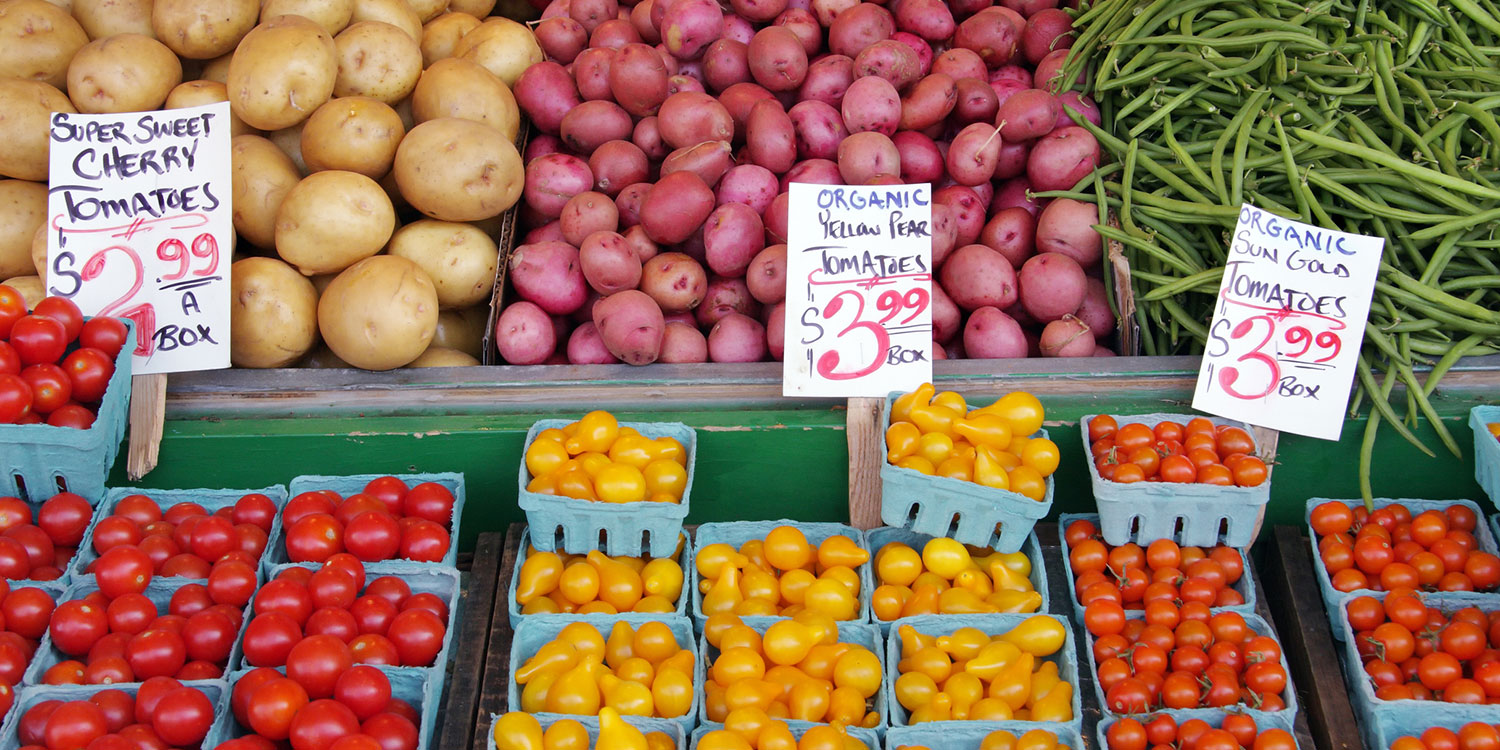Our friends at Food Tank, a food think tank, compiled this list of 14 food resolutions for 2014, helping to find solutions to nourish both people and the planet. As you ring in the New Year, consider making some of these resolutions your own.
As we enter 2014, there are still nearly one billion people suffering from hunger. Simultaneously, 65 percent of the world’s population live in countries where obesity kills more people than those who are underweight. But these are problems that we can solve, and there’s a lot to be done in the new year!
Through concrete action, hope and success in the food system is possible.
As Nelson Mandela said, “Sometimes it falls upon a generation to be great.”
Together we can be that generation and find solutions to nourish both people and the planet!
Here are 14 food resolutions for 2014:
1. Meet Your Local Farmer
Know Your Farmer, Know Your Food (KYF2) aims to strengthen local and regional food systems. Meeting your local farmer puts a face to where your food comes from and creates a connection between farmers and consumers.
2. Eat Seasonal Produce
By purchasing local foods that are in season, you can help reduce the environmental impact of shipping food. And your money goes straight to the farmer, supporting the local economy.
3. End Food Waste
More than 1.3 billion tons of edible food is wasted each year. Tips to reduce waste include planning meals ahead, buying “ugly’’ fruits and vegetables, being more creative with recipes, requesting smaller portions, composting, and donating excess food.
4. Promote a Healthy Lifestyle
Many diseases are preventable, including obesity, yet 1.5 billion people in the world are obese or overweight. Promote a culture of prevention by engaging in physical activity and following guidelines for a healthy diet. Gaps in food governance must also be addressed to encourage healthy lifestyles, including junk-food marketing to children.
5. Commit to Resilience in Agriculture
A large portion of food production is used for animal feed and biofuels—at least one-third of global food production is used to feed livestock. And land grabs are resulting in food insecurity, the displacement of small farmers, conflict, environmental devastation, and water loss. Strengthening farmers’ unions and cooperatives can help farmers be more resilient to food prices shocks, climate change, conflict, and other problems.
6. Eat (and Cook) Indigenous Crops
Mung bean, cowpea, spider plant . . . these indigenous crops might sound unfamiliar, but they are grown by smallholder farmers in countries all over the world. The UN Food and Agriculture Organization (FAO) reports that approximately 75 percent of the Earth’s genetic resources are now extinct, and another third of plant biodiversity is predicted to disappear by the year 2050. We need to promote diversity in our fields and in our diets!
7. Buy (or Grow) Organic
The Environmental Working Group (EWG) has found that at least one pesticide is in 67 percent of produce samples in the US. Studies suggest that pesticides can interfere with brain development in children and can harm wildlife, including bees. Growing and eating organic and environmentally sustainable produce, we can help protect our bodies and natural resources.
8. Go Meatless Once a Week
To produce 0.45 kilograms (one pound) of beef can require 6,810 liters (1,799 gallons) of water, and 0.45 kilograms (one pound) of pork can require 2,180 liters (576 gallons) of water. Beef, pork, and other meats have large water footprints and are resource intensive. Consider reducing your “hoofprint” by decreasing the amount and types of meat you consume.
9. Cook
In Michael Pollan’s book Cooked, he learns how the four elements—fire, water, air, and earth—transform parts of nature into delicious meals. And he finds that the art of cooking connects both nature and culture. Eaters can take back control of the food system by cooking more and, in the process, strengthen relationships and eat more nutritious—and delicious—foods.
10. Host a Dinner Party
It doesn’t have to be fancy; just bring people together! Talk about food, enjoy a meal, and encourage discussion around creating a better food system. Traveling in 2014 and craving a homemade meal? For another option try Meal Sharing and eat with people from around the world.
11. Consider the “True Cost” of Your Food
Based on the price alone, inexpensive junk food often wins over local or organic foods. But the price tag doesn’t tell the whole story. True cost accounting allows farmers, eaters, businesses, and policymakers to understand the cost of all of the “ingredients” that go into making fast food—including antibiotics, artificial fertilizers, transportation, and a whole range of other factors that don’t show up in the price tag of the food we eat.
12. Democratize Innovation
Around the world, farmers, scientists, researchers, women, youth, NGOs, and others are currently creating innovative, on-the-ground solutions to various interconnected global agriculture problems. Their work has the great potential to be significantly scaled up, broadened, and deepened—and we need to create an opportunity for these projects to get the attention, resources, research, and the investment they need.
13. Support Family Farmers
The UN FAO has declared 2014 the International Year of Family Farming, honoring the more than 400 million family farms in both industrialized and developing countries, defined as farms that rely primarily on family members for labor and management. Family farmers are key players in job creation and healthy economies, supplying jobs to millions and boosting local markets, while also protecting natural resources.
14. Share Knowledge across Generations
Older people have challenges—and opportunities—in accessing healthy foods. They’re sharing their knowledge with younger generations by teaching them about gardening and farming, food culture, and traditional cuisines. It’s also important to make sure that older people are getting the nutrition they need to stay active and healthy for as long as possible.





